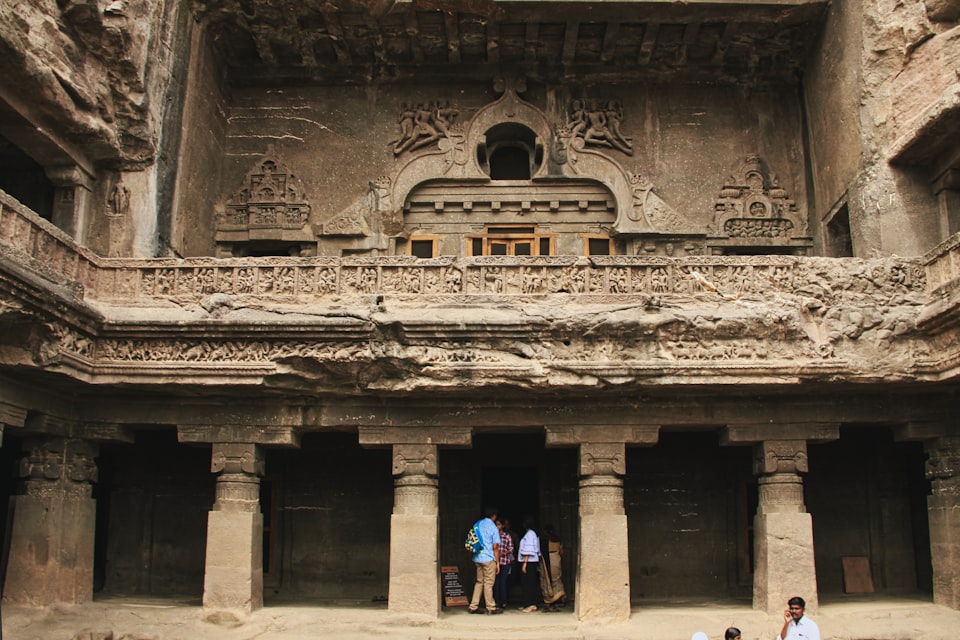2. How do various types of architecture in ancient India exhibit the genius of India and engineering skill?

Various types of architecture in ancient India
Introduction:
Ancient India is known for its rich cultural heritage and remarkable architectural achievements. The diverse types of architecture found in ancient India not only showcase the genius of the country but also highlight its exceptional engineering skills. From the grand temples of South India to the intricately carved caves of Ajanta and Ellora, each architectural marvel tells a story of India's rich history and the immense talent of its artisans and engineers.
The architecture of ancient India:
The architecture of ancient India is characterized by its unique blend of artistic expression, religious symbolism, and structural ingenuity. One of the most iconic architectural styles is the Dravidian style, which is prominently seen in the temples of South India. These temples, such as the Brihadeeswarar Temple in Thanjavur, are known for their towering gopurams (entrance towers), intricately carved pillars, and massive stone sculptures. The precision and skill required to construct these temples without modern machinery is truly awe-inspiring.
Another remarkable architectural achievement in ancient India is the rock-cut caves. The caves of Ajanta and Ellora, for example, are a testament to the mastery of ancient Indian engineers. Carved meticulously into the rock, these caves are adorned with exquisite paintings and sculptures that depict stories from Hindu mythology. The engineering involved in creating these caves, with their intricate carvings and elaborate architecture, is a testament to the advanced skills possessed by ancient Indian craftsmen.
The genius of Indian architecture is also evident in the construction of stepwells. Stepwells, such as the Rani ki Vav in Gujarat, were not only used as water reservoirs but also served as spaces for communal gatherings and religious ceremonies. The construction of these stepwells required precision in measurements and engineering techniques to ensure structural stability. The elaborate carvings and ornate decorations found in these stepwells further exemplify the artistic talent of ancient Indian architects.
While ancient Indian architects didn't have access to CAD software or modern tools, their engineering prowess was nothing short of extraordinary. It's almost as if they had a direct line to the gods for architectural guidance!
Statistical data:
In terms of statistics, it is estimated that the construction of the Brihadeeswarar Temple took around 12 years to complete, with over 130,000 tons of granite used in its construction. The Ajanta and Ellora caves, on the other hand, consist of a total of 64 caves, with the construction spanning several centuries.

Frequently Asked Questions:
Q: How were ancient Indian temples built without modern technology?
A: Ancient Indian temples were built using traditional construction techniques that relied on manual labor and ingenious engineering methods. Skilled artisans and craftsmen played a crucial role in the construction process.
Q: What are some unique features of Dravidian architecture?
A: Dravidian architecture is characterized by its towering gopurams, intricately carved pillars, and use of vibrant colors. The temples often have elaborate entranceways and inner sanctums dedicated to various deities.
Q: What makes the Ajanta and Ellora caves significant?
A: The Ajanta and Ellora caves are significant for their stunning rock-cut architecture and the exquisite paintings and sculptures found within. They provide valuable insights into ancient Indian art, culture, and religious practices.
Conclusion:
The various types of architecture in ancient India stand as a testament to the genius of the country and the exceptional engineering skill possessed by its artisans. From the towering temples of South India to the intricate rock-cut caves and stepwells, each architectural marvel showcases the depth of India's cultural heritage and its ability to create grand structures that have stood the test of time. The legacy of ancient Indian architecture continues to inspire awe and admiration, serving as a reminder of the incredible talent and ingenuity of the people who built them.
